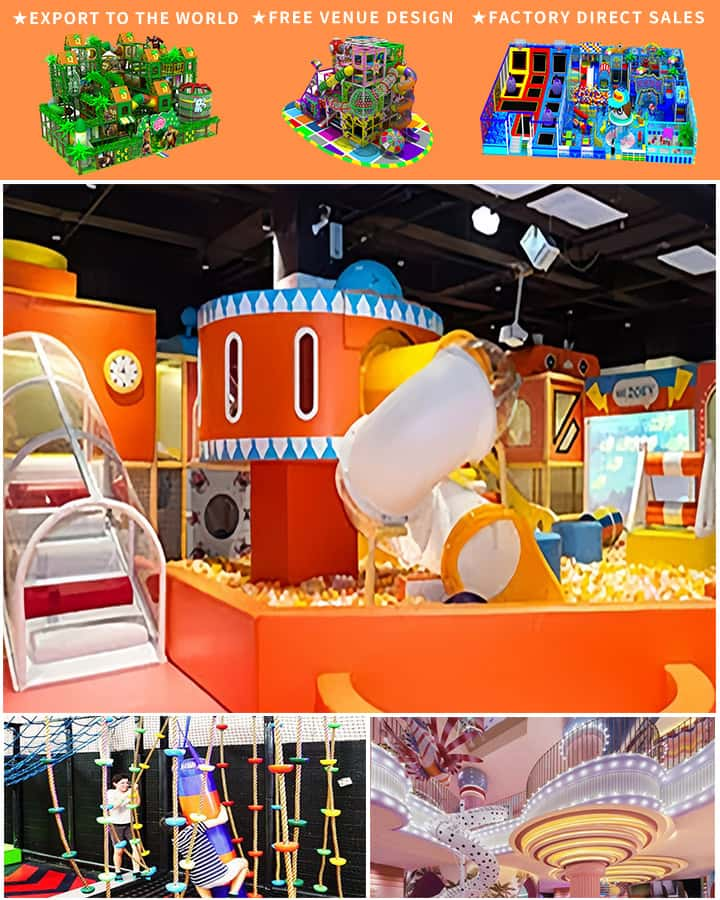Designing an engaging and safe playground for kids is a rewarding yet challenging task that requires thoughtful planning and creativity. A well-designed playground not only promotes physical activity and social interaction but also provides endless hours of fun and learning opportunities for children. Here’s a comprehensive guide to help you create the ultimate kids’ playground.
1. Understand the Importance of Playgrounds
Playgrounds are more than just a recreational space; they play a crucial role in the development of children. Through play, kids can improve their motor skills, enhance their cognitive abilities, and boost their social skills. An engaging playground fosters creativity, cooperation, and problem-solving, making it an essential component of early childhood development.
2. Safety First
The primary consideration when designing a playground is safety. Ensure that all equipment complies with local safety standards and regulations. Use soft, shock-absorbent materials like rubber or wood chips under play structures to minimize injury risks from falls. Additionally, ensure smooth surfaces on walkways and around equipment to prevent trips and falls.
3. Age-Appropriate Design
Kids of different age groups have varying needs and interests. A versatile playground that caters to multiple age groups is ideal. For younger children (ages 2-5), consider installing low-risk structures such as sandbox areas, small slides, and tunnels. For older kids (ages 6-12), incorporate more challenging elements like taller slides, climbing walls, and zip lines.
4. Diverse Play Structures

To keep kids engaged, integrate a mix of play structures. Traditional swings, slides, and seesaws should be complemented with modern elements like spinner bowls, carousel seats, and balance beams. Incorporate themed play areas like pirate ships or castles to spark imagination and encourage role-playing.
5. Natural Elements
Incorporating natural elements can significantly enrich a playground’s appeal. Consider adding elements like a small stream, water features, rock climbing walls, or nature trails. Trees provide shade and a natural aesthetic, while flower beds and gardens offer sensory experiences and teach children about plant life.
6. Inclusive Playgrounds
Inclusive playgrounds are designed to be accessible to all children, including those with disabilities. Features like wheelchair-accessible ramps, transfer stations, and adaptive play equipment ensure that every child can participate and enjoy the playground. Sensory-rich elements such as textured panels, musical instruments, and interactive installations cater to children with sensory processing needs.
7. Community Engagement
Engage the community in the playground’s design process. Conduct surveys or hold workshops to gather input from parents, teachers, and children. This inclusivity ensures the final design meets the needs and preferences of the community it serves.
8. Maintenance and Upkeep
A successful playground requires regular maintenance to stay safe and enjoyable. Establish a maintenance schedule to inspect and repair equipment periodically. Clean surfaces to remove debris and hazardous materials regularly. Encourage the community to take pride in their playground by organizing clean-up events or adopt-a-park programs.
9. Budget-Friendly Solutions
Building a playground doesn’t have to break the bank. Seek grants or funding opportunities from local governments, non-profits, and private donors. Partnering with local businesses for sponsorships or donations can also alleviate costs. Opt for durable materials that require minimal replacement to maximize your investment over time.
10. Educational Opportunities
Integrate educational components into the playground design. Interactive elements such as chalkboards, maps, and informational plaques can make learning fun and engaging. Theme parks based on scientific concepts, historical figures, or literary characters can inspire curiosity and learning outside the traditional classroom setting.
Conclusion
Creating an engaging kids’ playground involves balancing safety, inclusivity, and fun. By considering the diverse needs of children and incorporating various play structures and natural elements, you can design a space that offers both entertainment and developmental benefits. Remember to engage the community, maintain the playground regularly, and seek budget-friendly solutions to ensure your playground remains a cherished space for years to come




